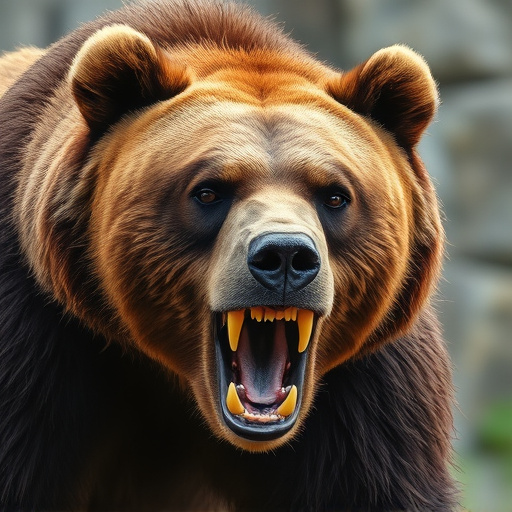Bear spray, using capsaicin to irritate bears' nasal and eye passages, is an effective self-defense tool in 20-30 feet (6-9 meters) but can be affected by wind, terrain, and bear size. For optimal deterrence, combine it with noise-making devices and other preventive measures. The best method involves maintaining a safe distance, aiming for the bear's face and eyes, using a jet stream or pulse spray pattern, and practicing regularly. Choosing the right gear requires understanding spray patterns, wind conditions, and specific needs, with 20 feet (6 meters) as the typical effective range, though professional-grade gear can offer longer reach. Always consult manufacturer instructions for safe use.
Bear attacks are a real concern in many outdoor settings. Thankfully, bear attack prevention spray equipment offers a valuable tool for protection. This article delves into the essentials of bear spray, exploring its functionality, limitations, and how to use it effectively. We’ll guide you through optimal application techniques and help you choose the right gear based on your needs, including the best distance for maximum bear spray effectiveness.
- Understanding Bear Spray: How It Works and Its Limitations
- Optimal Application Techniques for Maximum Protection
- Choosing the Right Bear Spray Equipment for Your Needs
Understanding Bear Spray: How It Works and Its Limitations
Bear spray, also known as bear attack prevention spray, is a popular self-defense tool designed to deter aggressive bears when out in their habitat. It works by releasing a powerful stream of capsaicin, the active ingredient found in chili peppers, into the bear’s eyes and face. This irritates the bear’s sensitive nasal passage and eyes, temporarily blinding it and causing it to flee. However, understanding its limitations is crucial for effective use.
The best distance for bear spray effectiveness is generally considered to be around 20-30 feet (6-9 meters), but this can vary depending on factors such as wind direction, terrain, and the size of the bear. Beyond this range, the spray may not reach the bear or may have diminished effect. It’s also important to note that bears have a thick fur coat that can reduce the spray’s impact, and some species like black bears have a more powerful sense of smell that could minimize its effectiveness. Additionally, bear spray is not a guaranteed solution; it works best as a deterrent when used in conjunction with noise-making devices and other preventive measures.
Optimal Application Techniques for Maximum Protection
The optimal application technique for bear attack prevention spray is to maintain a safe distance and aim for the bear’s face and eyes. The best distance for bear spray effectiveness varies depending on the species and the individual bear’s behavior, but generally, it’s recommended to keep approximately 20-30 feet (6-9 meters) away. At this distance, you can effectively deploy the spray while ensuring that you’re not too close, which could provoke an aggressive response from the bear.
To maximize protection, it’s crucial to use a jet stream or pulse spray pattern, rather than a mist. This technique ensures that the spray reaches the target quickly and efficiently, covering a larger area with each burst. Practice proper timing and aim, releasing the spray as the bear approaches or charges. Remember, consistent practice can significantly improve your ability to apply the spray effectively in real-situation scenarios.
Choosing the Right Bear Spray Equipment for Your Needs
When selecting bear spray equipment, understanding the best distance for its effectiveness is key. The optimal range varies based on factors like spray pattern, wind conditions, and the type of bear encounter. Typically, bear spray should be effective up to 20 feet (6 meters), but this can differ with professional-grade gear designed for advanced users. Look for products that offer a wide spray angle and reliable canister design, ensuring you can cover this distance effectively.
Consider your specific needs and environment when choosing. For backcountry hikers and campers, a moderate-range spray might suffice. In contrast, those working or living in areas with higher bear activity may require gear with a longer reach. Always check the manufacturer’s specifications for the recommended use cases and safety instructions to ensure the best protection during potential encounters.
Bear attack prevention spray is a valuable tool for outdoor enthusiasts in bear country. Understanding its effectiveness, proper application techniques, and choosing the right equipment are key to ensuring maximum protection. When used within the optimal range of 20-30 feet (the best distance for bear spray effectiveness), it can deter aggressive bears. However, no single method guarantees safety; a multi-layered approach including awareness, noise making, and secure food storage is essential in mitigating risks during encounters with these powerful animals.
